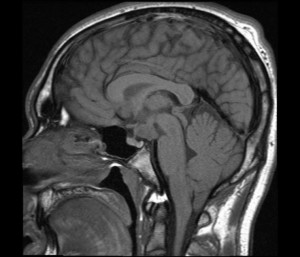Are you lately having painful bumps on the head, neck, ears or chin? You may be having a condition called Hamartoma. Read on to know what is a Hamartoma, its causes, symptoms, diagnosis and treatment.
Hamartoma Definition
Page Contents
Doctors and medical experts define Hamartoma as a benign, tumor-like growth on the skin surface. A Hamartoma tumor can arise on different areas of the external body surface such as the neck, chin, face, ears and head. These bumps can also develop in the internal regions of the body such as heart, lungs, spleen, kidneys and hypothalamus.
Hamartoma is pronounced as “Ham-ahr-to-ma”.
Hamartoma Symptoms
Hamartoma is mainly characterized by the appearance of bumps that look like tumors. These are usually asymptomatic and do not give rise to visible symptoms in the initial stages. This is why the diagnosis of these bumps happens accidentally. The disease is typically diagnosed while detecting some other condition.
The symptoms of this disease in the later stage actually depend on the type of Hamartoma that an individual suffers from. In case of a Hypothalamic Hamartoma syndrome, a patient suffers from problems like :
- Multiple seizures, often accompanied with laughter
- Progressive failure in cognition
- Impaired social adjustment
- Early puberty
- Occasional angry outbursts
- Epilepsy
In case of Hamartomas arising on head or neck, the individual may suffer from a hoarse voice, swelling of the crown or neck and pain in the chin.
Hamartoma tumors arising on chest can cause respiratory problems. The suffering individual may have Haemoptysis and chronic cough. In rare cases, Hamartoma bumps can appear as lesions less than 2 cm in size. These are benign cartilaginous masses.
Hamartoma growths arising on breast consists of fibrous, adipose and glandular tissues. Hamartoma of Gastrointestinal Tract occurs at any spot in the gut of sufferers.
Hamartoma Causes
Hamartoma tumors are formed when a huge amount of normal cells unnaturally get deposited on a healthy tissue. These grow at the same rate as the organ that produces the tissue. However, Hamartoma growths never invade surrounding organs unlike malignant tumors.
Hamartoma Diagnosis
The diagnosis of Hamartoma is mainly done with the aid of Computed Tomography (CT) scans. CT images help in careful analysis of the lesion. Radiographs are also used for this purpose. However, a CT scan is more effective in detecting the fat and calcification in a hematoma than a Radiograph Test.
If the doctor suspects an Endobronchial Hamartomas, a Percutaneous or Brochoscopic Biopsy may be recommended. Such tests are very useful in distinguishing Endobronchial Hamartomas from Bronchial Carcinoid Tumors.
Hamartoma Treatment
The treatment of Hamartoma tumors depend on the type of the disease that the individual suffers from. In case of a Hamartoma tumor arising on the skin, treatment is generally unnecessary. Many people go for a Hamartoma removal as they find these growths physically unattractive. Treatment in such cases is only for cosmetic reasons and involves surgery. Acitretin, laser resurfacing and chemical peels are also effective for Hamartoma treatment.
Hamartoma in hair follicles are removed with local surgical excision or Co2 treatment. Unless completely removed, these can grow back again after sometime.
Hamartoma Prognosis
Hamartoma is not life-threatening and has an excellent prognosis. People with Pulmonary Hamartoma have a high chance of getting completely cured. They do not cause death though they may result in minor complications. Complete removal of Hamartoma or further biopsy is needed to avoid complications in such cases.
Hypothalamic Hamartoma

Picture 1 – Hypothalamic Hamartoma
Source – radpod
Hypothalamic Hamartoma is a benign Hamartoma tumor that arises on Hypothalamus, the part of the brain controlling sensations of hunger, thirst and body temperature. A minor Hypothalamic Hamartoma makes a sufferer feel like laughing and also gives rise to seizures. Large Hamartoma tumors on the Hypothalamus can give rise to more serious symptoms including changes in behavior and mental ability.
Mesenchymal Hamartoma
Mesenchymal Hamartoma refers to benign growths that may arise on different parts of the body such as the chest wall and liver. Hepatic Mesenchymal Hamartoma or Mesenchymal Hamartoma on liver usually make themselves apparent within the first two years of a sufferer’s birth. These may result in fever and vomiting symptoms in infants.
Mesenchymal Hamartoma in the chest wall are very rare. These are benign growths and generally arise from the ribs. These usually arise in early infancy and are corrected with the aid of a surgical operation.
Chondroid Hamartoma
A Chondroid Hamartoma is also known as Adenochondroma or Mixed Mesenchymoma. These are non-malignant tumors composed of benign connective tissue. These lesions are quite common and they form 10% of all tumors detected in chest radiographs.
These lesions are generally with 1 to 3 cm in diameter but can be as large as 9 cm. They can result in symptoms like coughing, Haemoptysis and Dyspnoea. Patients with Haemoptysis cough up blood from the respiratory tract which sounds as a sign of some complicated syndrome but is actually not so harmful. It can be treated with the aid of Vasopressin, Adrenalin or Topical Vasoconstrictors. Surgery is not generally required.
Pulmonary Hamartoma
These are benign lesions comprising of muscle, bone, fat, connective tissue and cartilage. It is found to affect the lungs of a person. Pulmonary Hamartoma lesions are the most common lung Hamartoma tumors. These account for nearly 8% of all lung tumors.
Biliary Hamartoma
Biliary Hamartomas are isolated or random tumors that are round in size. These are up to 15 mm in diameter and are scattered all over the liver.
If you are having Hamartoma tumors, you need not worry. These are benign lesions and are not life-threatening. Treatment is necessary if you are having discomforts from the condition. In case of serious discomforts such as Haemoptysis, you should seek immediate medical treatment to prevent complications.
References:
http://www.wisegeek.com/what-is-a-hamartoma.htm
http://en.wikipedia.org/wiki/Hamartoma
http://www.epilepsy.com/epilepsy/epilepsy_hypothalamichamartoma
http://www.wrongdiagnosis.com/medical/hamartoma.htm
http://www.ehow.com/how_2086781_diagnose-hamartoma.html
